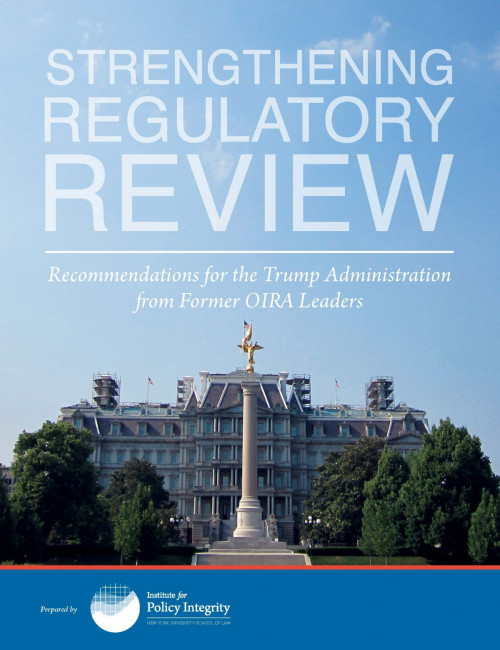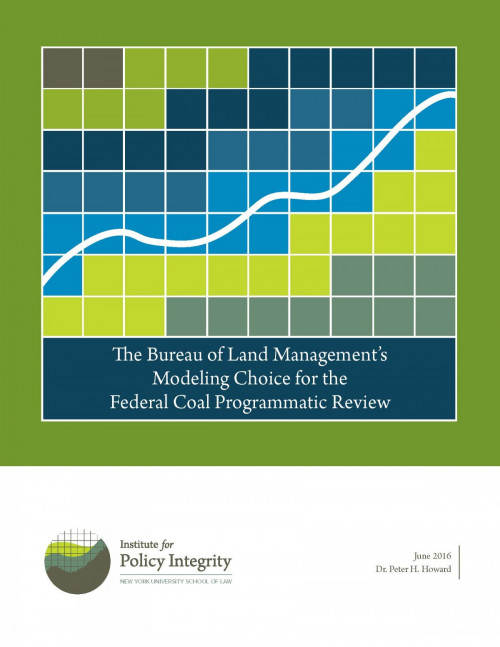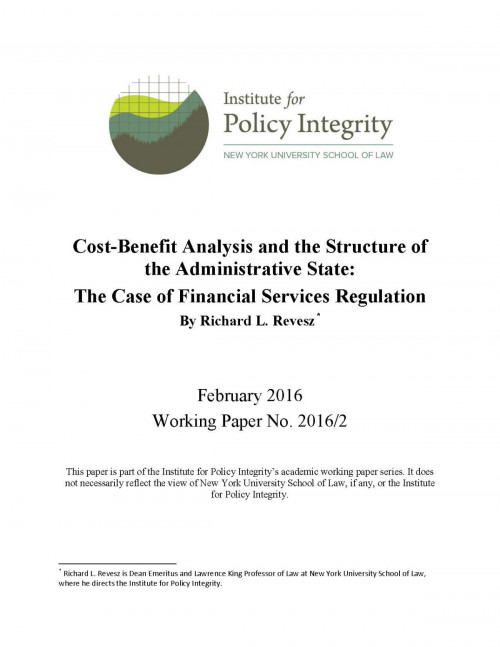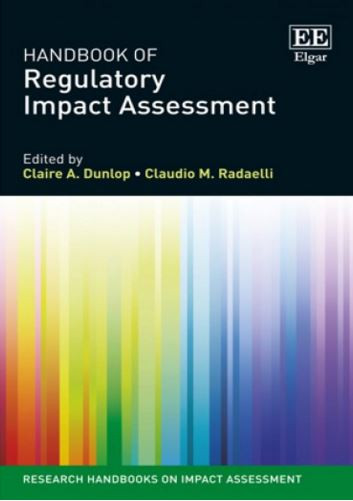-

Strengthening Regulatory Review
Recommendations for the Trump Administration from Former OIRA Leaders
This report contains a set of recommendations for the Trump Administration that, if implemented, would strengthen the process of regulatory review. These recommendations reflect the general consensus of a group of former Administrators and Acting Administrators from the Office of Information and Regulatory Affairs who served under both political parties.
-

The Bureau of Land Management’s Modeling Choice for the Federal Coal Programmatic Review
There are multiple power sector models available to the Department of Interior (DOI)’s Bureau of Land Management (BLM) for analyzing the effect of current and alternative coal regulations and leasing policies during preparation of its programmatic environmental impact statement (PEIS). This document lays out model selection criteria to assist BLM in weighing the benefits and costs of these available models, and offers recommendations for model selection, highlighting the tradeoff between model complexity and transparency.
-
Handbook of Regulatory Impact Assessment
Jason Schwartz, legal director at the Institute for Policy Integrity, authored a chapter in the new Handbook of Regulatory Impact Assessment. Schwartz’s chapter explores the varied applications and approaches to cost-benefit analysis in the context of regulatory impact assessment.
-

Cost-Benefit Analysis and the Structure of the Administrative State
The Case of Financial Services
The viability and desirability of conducting cost-benefit analysis of financial regulation is a subject of intense academic debate. Opponents claim that such analysis is feasible for environmental regulation but not for financial regulation because of the difference in the benefits that require monetization in the respective areas. This article, which will be published in a forthcoming edition of the Yale Journal on Regulation, argues that the recent debate misses an important part of the problem. In large part, cost-benefit analysis of financial regulation cannot currently be performed successfully because of institutional shortcomings, not analytical difficulties. Compared to Executive Branch agencies, independent agencies, like the major financial regulatory agencies, lack the capacity to do cost-benefit analyses of acceptable quality. Fortunately, there are good Executive Branch models that could be exported to the financial regulatory agencies.
-

Rethinking Health-Based Environmental Standards
In Whitman v. American Trucking, the Supreme Court interpreted the Clean Air Act to require the EPA to set the National Ambient Air Quality Standards (NAAQS), without considering costs. Instead, the agency must rely exclusively on health-related criteria. The authors argue that such health-based standards are problematic because there is no coherent way to set the permissible level of pollution based on health considerations alone and, ironically, the NAAQS have generally been set at levels that are inefficiently lax from an economic perspective. The authors urge a reinterpretation of the American Trucking case that would allow the EPA to consider costs-benefit analysis when it would lead to more stringent standards, as it currently does for most regulated pollutants.
Viewing all publications in Government Transparency

